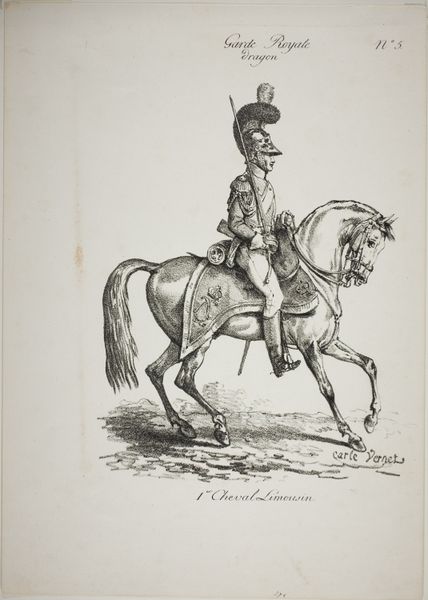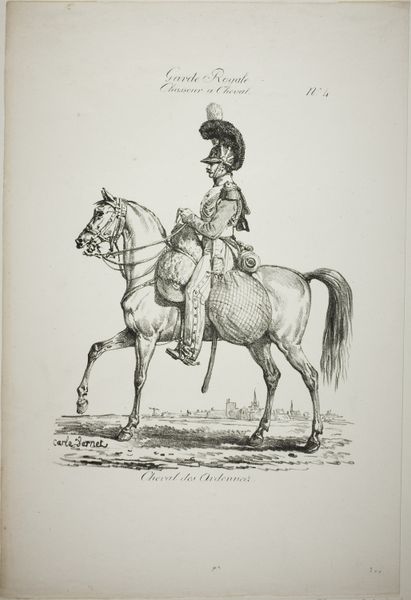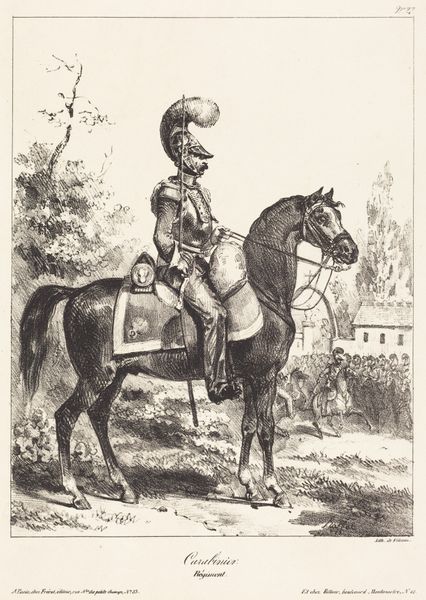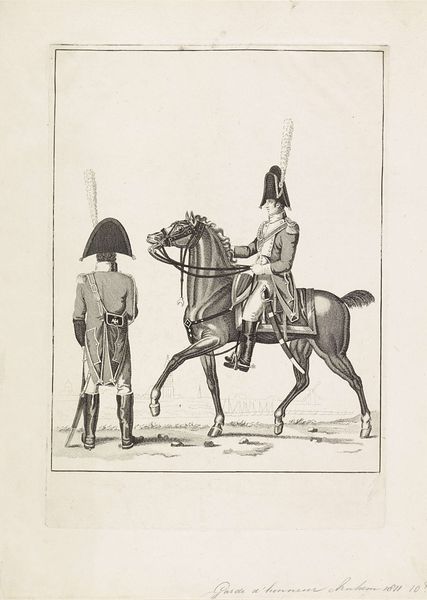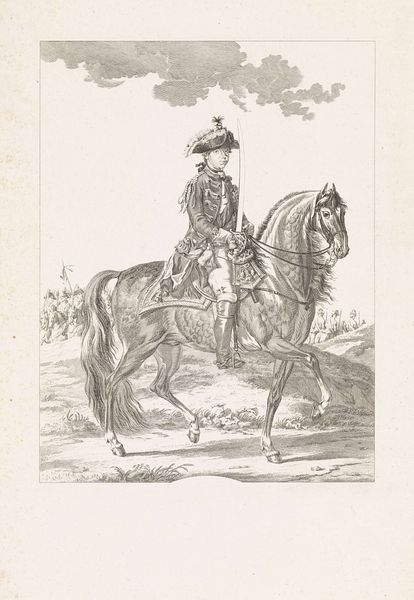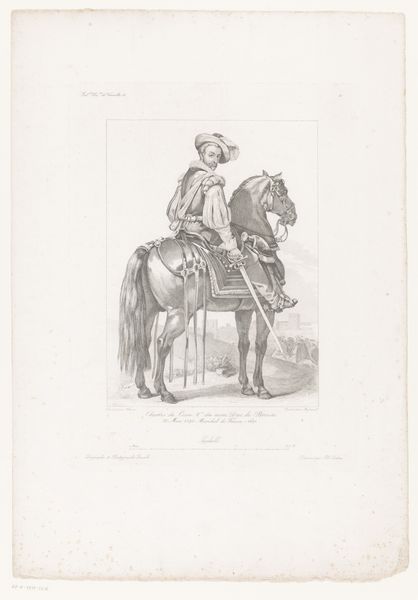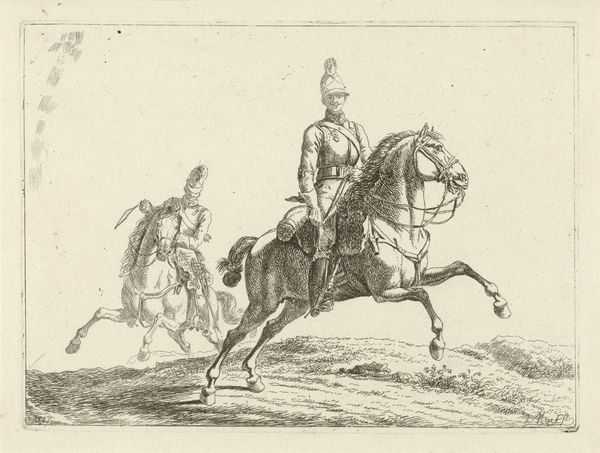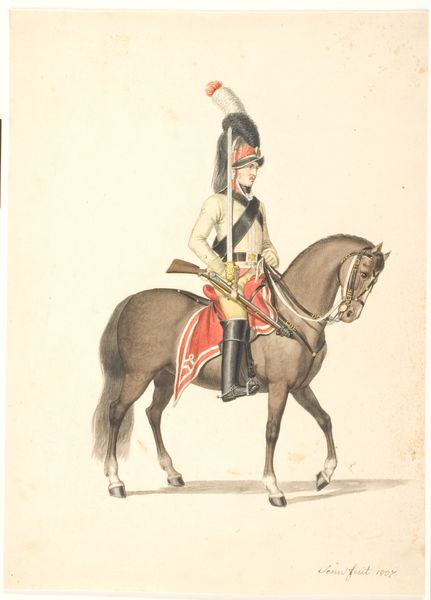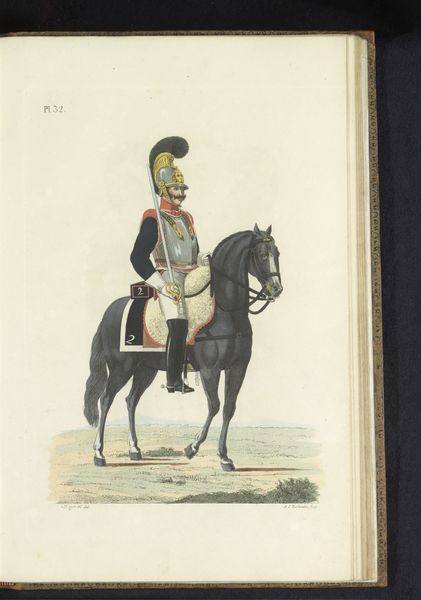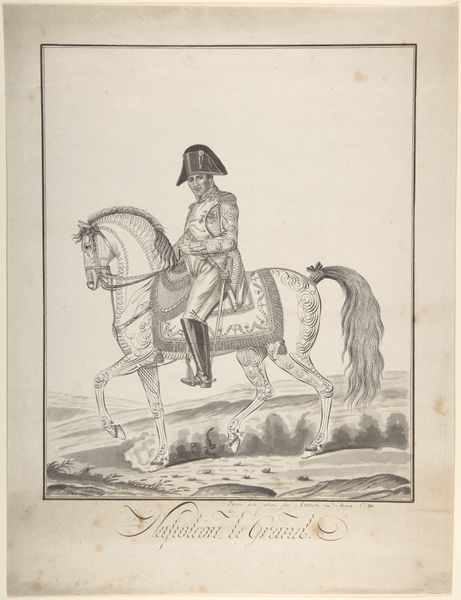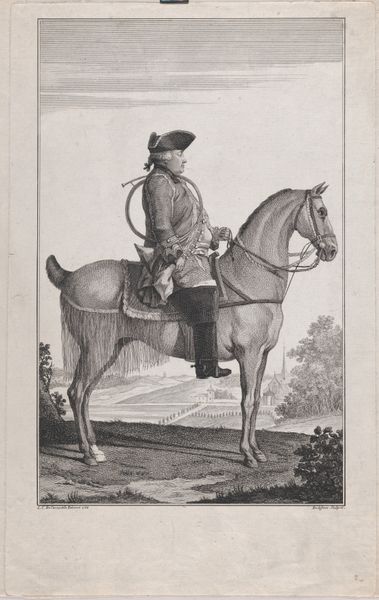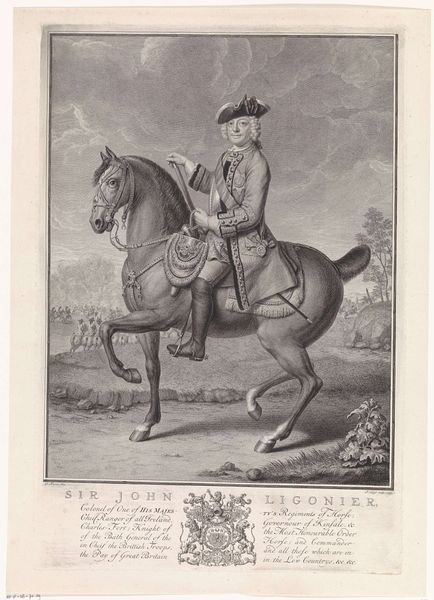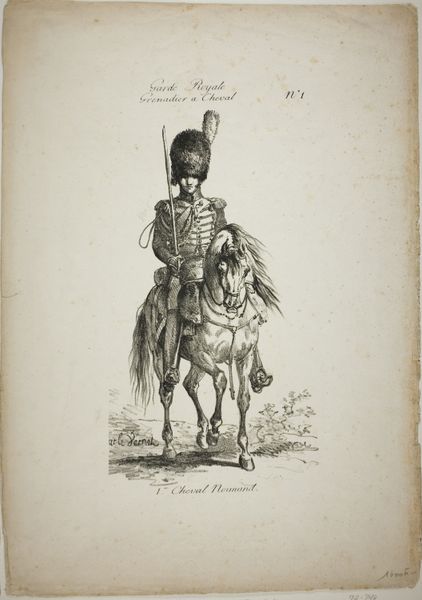
Royal Guard, Norman Mounted Soldier and Horse, No. 2 c. 1818
0:00
0:00
drawing, lithograph, print, paper, pencil
#
portrait
#
drawing
#
lithograph
# print
#
landscape
#
figuration
#
paper
#
pencil drawing
#
pencil
#
history-painting
#
academic-art
#
realism
Dimensions: 300 × 212 mm (image); 426 × 288 mm (sheet)
Copyright: Public Domain
Editor: This is Carle Vernet's "Royal Guard, Norman Mounted Soldier and Horse, No. 2," a lithograph from around 1818. It’s very detailed; almost photographic. I find the rider and horse very rigid. What symbolic meaning might this image convey about power and military strength in post-Napoleonic France? Curator: It’s fascinating how Vernet uses lithography to achieve this sense of hyper-realism and detail, isn’t it? Notice the soldier's imposing headdress, a deliberate choice. These details carry strong cultural meaning. Ask yourself, what does such exaggerated costuming evoke? Is it solely about military strength, or might it also address anxieties surrounding authority and national identity after such a turbulent period? Editor: So the costume and the horse may convey a carefully constructed message? Curator: Exactly! Think about the horse too: it’s a "Norman" horse. What historical associations does the term "Norman" bring to mind in French culture? Vernet, in choosing this particular breed, connects the present with a distant, almost mythical past. It invites the viewer to remember a lineage of conquest and authority, perhaps in an effort to re-establish faith in the French monarchy. Editor: So it's not just a picture of a soldier. Curator: Not at all. Vernet's work presents a rich tapestry of symbols interwoven with cultural memory and historical context. The print acts as a mirror reflecting France's hopes and fears in the wake of immense political upheaval. Do you see that interplay of historical memory and contemporary power? Editor: I do now. The symbols tell a story beyond the surface. Thanks! Curator: Indeed. By examining such images, we come to better understand how societies create and recreate narratives about themselves through symbolic representation.
Comments
No comments
Be the first to comment and join the conversation on the ultimate creative platform.
